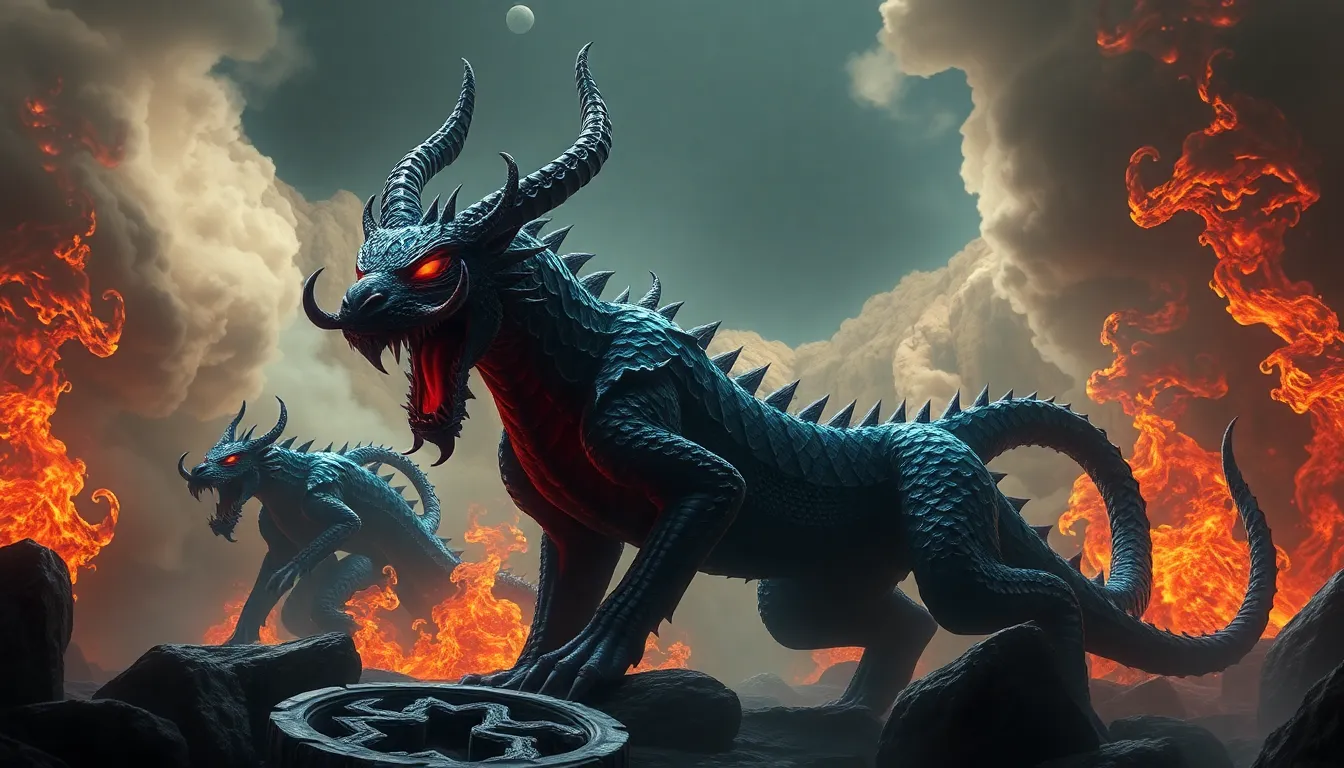The Birth of the Cosmos: How Myths Illuminate Our Past
Introduction: The Intersection of Mythology and Cosmology
Creation myths have held a significant place in the fabric of human culture since time immemorial. These narratives provide insight into the beliefs and values of different societies, serving as a lens through which we can understand not only our origins but also our place within the universe. Myths illuminate the mysteries surrounding human existence and the cosmos, offering explanations for the unexplainable and establishing a shared identity among communities.
The Nature of Myths: Definitions and Functions
At their core, myths are traditional stories that serve to explain natural or social phenomena. They often involve supernatural beings and events, encapsulating the beliefs and values of the culture from which they originate. Myths function on various levels:
- Psychological Function: They help individuals process their experiences and emotions.
- Cultural Function: Myths reinforce social norms and values, providing a sense of belonging.
- Educational Function: They serve as a means of passing down knowledge and wisdom through generations.
Cosmological Myths Across Cultures
A survey of creation myths reveals a tapestry of narratives that reflect the diverse experiences of humanity. From the Greek tales of Gaia and Uranus to Hindu accounts of Brahma creating the world, these stories share common themes while exhibiting unique traits:
- Chaos and Order: Many myths begin with a chaotic state that is transformed into an ordered universe.
- Divine Beings: Most creation stories involve gods or supernatural beings who play a pivotal role in the creation process.
- Human Origins: Myths often address the origins of humanity and its relationship with the divine.
The Role of Myth in Early Human Societies
In ancient civilizations, myths were essential for making sense of the world. They explained natural phenomena like the changing seasons, celestial events, and life cycles. These narratives served to:
- Provide explanations for the origins of the earth, the sky, and humanity.
- Establish moral codes and social structures within communities.
- Foster a collective identity and shared purpose among members of society.
Case Study: The Babylonian Enuma Elish
The Enuma Elish, one of the oldest creation myths from ancient Mesopotamia, illustrates the themes of chaos, order, and divine conflict. This epic tells the story of the god Marduk, who rises from a primordial battle against the forces of chaos, symbolized by the goddess Tiamat. Key elements of the Enuma Elish include:
- Chaos vs. Order: The narrative begins with a chaotic watery abyss, and Marduk’s victory brings order to the cosmos.
- Creation of Humanity: Marduk creates humans from the blood of a defeated god to serve the deities.
- Cultural Identity: The myth reinforces Babylon’s status and Marduk’s supremacy, reflecting the civilization’s values and beliefs.
The Influence of Greek Mythology on Western Cosmology
Greek mythology, particularly Hesiod’s Theogony, has profoundly influenced Western cosmological thought. This work outlines the origins of the gods and the creation of the world, emphasizing the importance of divine lineage and the struggle for power among the gods. Some of its key themes include:
- Cosmic Order: The transition from chaos to a structured universe governed by divine beings.
- Human Existence: The relationship between gods and humanity, highlighting themes of hubris and morality.
- Philosophical Impact: The myths sparked philosophical inquiries that shaped Western philosophy and science.
Indigenous Creation Narratives and Their Ecological Wisdom
Native American and Aboriginal Australian creation myths often embed deep ecological wisdom, emphasizing the interconnectedness of all life. For instance:
- Storytelling: These narratives are passed down through generations, fostering a respect for nature.
- Ecological Responsibility: Myths often highlight the importance of stewardship and living harmoniously with the earth.
- Community Identity: They reinforce cultural identity and promote community cohesion through shared beliefs.
Modern Science and Myth: Bridging the Gap
As scientific understanding of the cosmos has evolved, so too has the relationship between myth and science. While science provides empirical explanations for cosmic phenomena, myths offer narratives that resonate with human experience. This relationship can be summarized as follows:
- Complementary Roles: Myths and science can coexist, each addressing different aspects of human curiosity and understanding.
- Exploring the Unknown: Both serve as tools for exploring the mysteries of existence and our place in the universe.
- Shaping Worldviews: Myths influence cultural perspectives that inform scientific inquiry.
The Enduring Legacy of Creation Myths in Contemporary Culture
Creation myths continue to inspire modern literature, film, and art, reflecting their timeless relevance. Contemporary works often draw upon ancient narratives to explore themes of origin and existence:
- Literature: Authors use mythological references to deepen narratives and connect with readers.
- Film: Movies often reinterpret creation myths to address modern issues and existential questions.
- Art: Artists incorporate mythological themes to comment on the human condition and our relationship with the cosmos.
Conclusion: Myths as a Lens to Understand Our Place in the Universe
The power of myths lies in their ability to shape human thought and culture, offering profound insights into our origins and existence. As we explore the cosmos, it is essential to appreciate the wisdom embedded in these narratives. They not only reflect the beliefs of ancient societies but also invite us to ponder our place in the universe, reminding us that the quest for understanding is as old as humanity itself.




